Drunken Noodles
This post may contain affiliate links.
Learn how to make THE BEST Drunken Noodles with chicken. This homemade recipe for the spicy Thai restaurant favorite Pad Kee Mao, is easy to make in just 20 minutes!
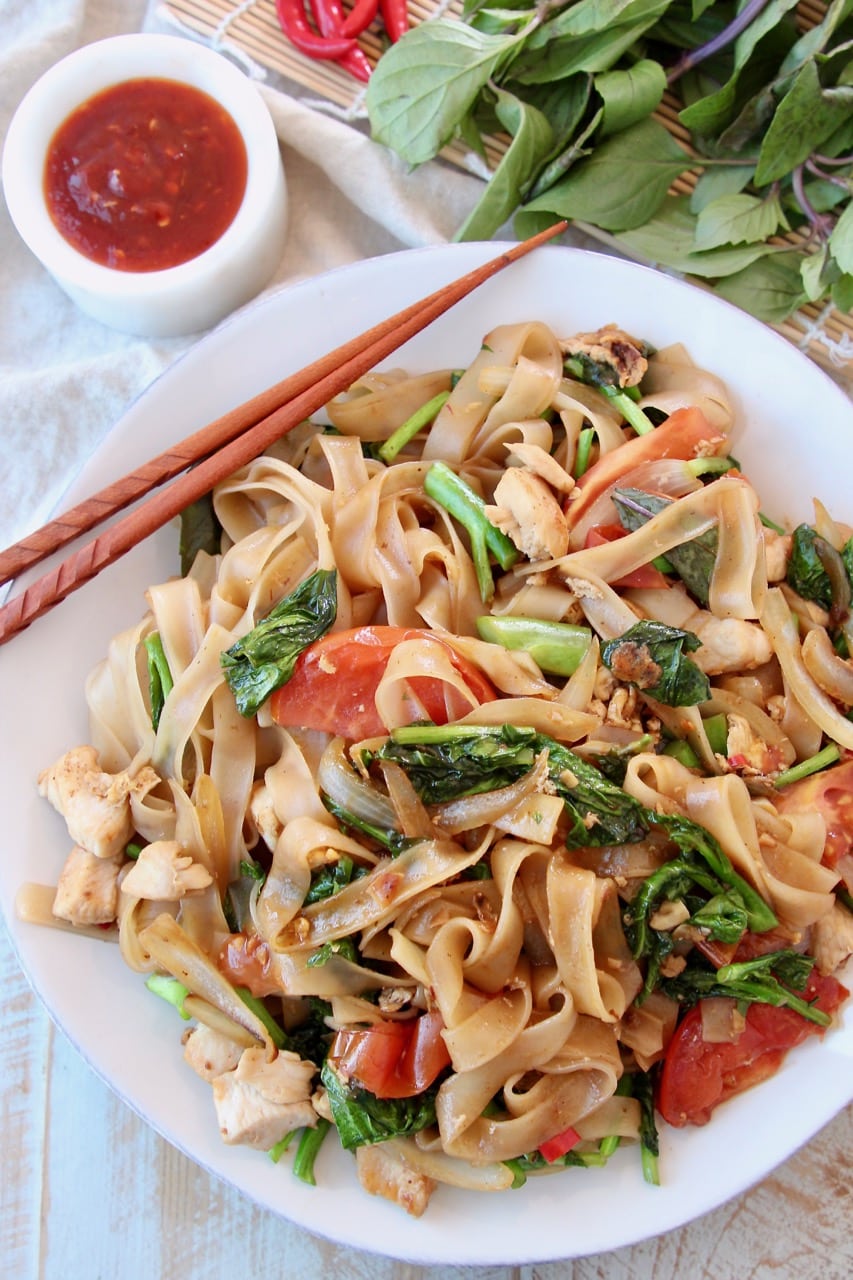
Table of contents
My original inspiration to make this dish came after my favorite Thai restaurant in San Diego closed. I was a loyal customer and totally addicted to their Thai Drunken Noodles, Yellow Curry and Pan Fried Roti Bread!
Since they closed their doors a few years ago, I’ve been perfecting my own versions of their classic recipes from Thailand. After dozens of recreations of their Drunken Noodles, I’ve finally made the perfect homemade recipe, that tastes just like their classic noodle dish!
And bonus, it’s made in less time than it takes to order Thai food on an app! In just 30 minutes, this dish is on the table for dinner.
While the recipe is quite simple, getting the perfect Drunken Noodles sauce is really the key to this noodle dish. The sauce is so flavorful and slightly spicy. That’s where the name comes in, the story goes that you’ll need to drink an ice cold beer with this recipe because it’s so spicy!
But don’t worry, in this post, I’ll share how to adjust the spice to your preference.
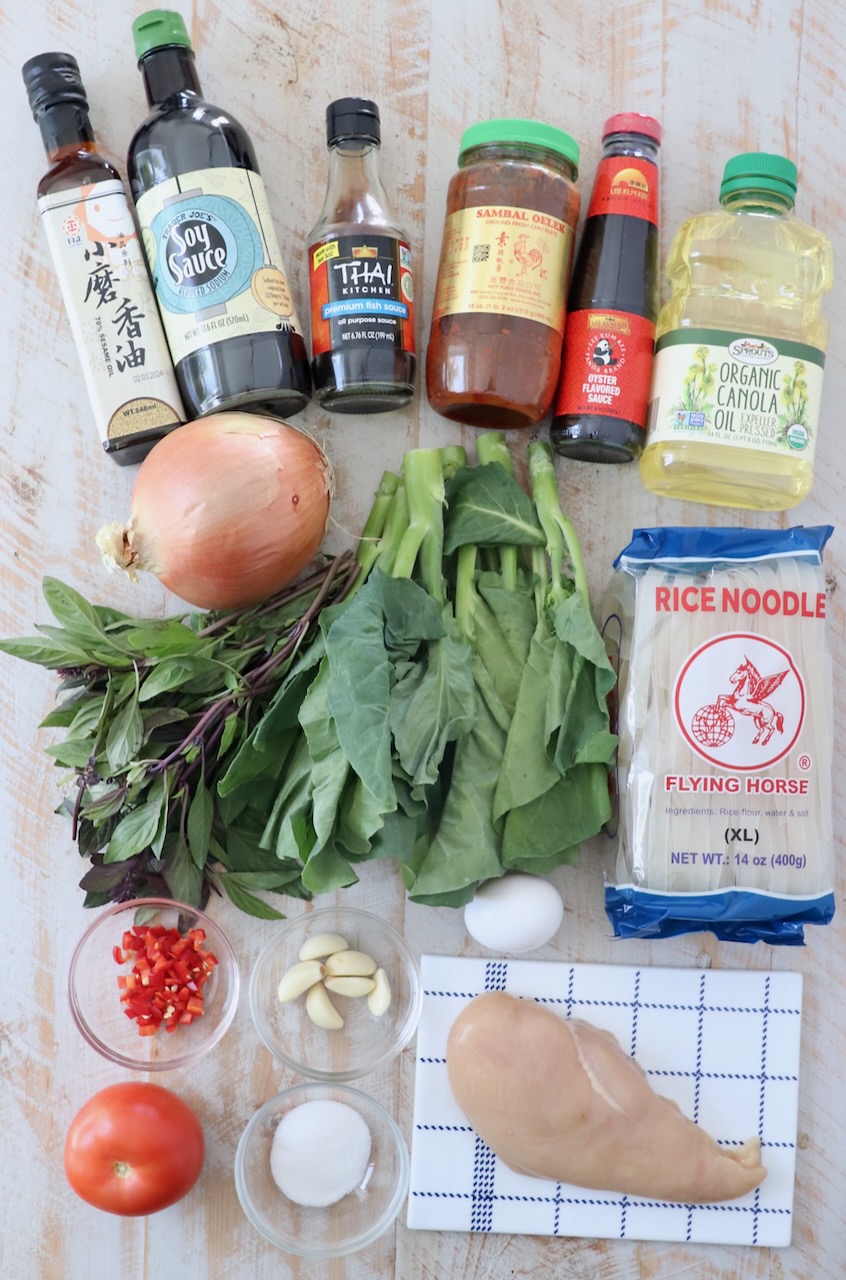
Ingredients
Some of the ingredients listed below might be hard to find at a traditional American grocery store. Refer to the section below for easy substitutions of these items
- Oyster sauce – you can find this ingredient in the Asian section of most major grocery stores. Even though it has oyster in the name, this sauce isn’t actually fishy tasting at all. It’s thick, sweet and salty. It helps thicken the drunken noodle sauce and adds a wonderful umami flavor.
- Fish sauce – you can also find this sauce in the Asian section of most grocery stores. It adds another element of umami to the dish and a wonderful salty, savory flavor.
- Ground fresh chili paste – this dish is known for it’s spicy flavor and the chili paste adds to the spiciness of the dish. Add more or less to the sauce, depending on how spicy you want to make the drunken noodles.
- Soy sauce – feel free to use low-sodium or traditional soy sauce, depending on the level of saltiness that you like in a recipe. I’ve used both versions in this recipe over the years and I honestly can’t tell a huge difference in the final result.
- Sesame oil – this oil is adds another layer of flavor to the sauce for the noodles. Feel free to also use it for cooking the vegetables, instead of canola oil.
- Granulated sugar – just a little bit of sugar is adds sweetness and balances out the salty, spicy flavors in this dish.
- Thai basil – check out this article all about Thai Basil to learn more about the herb, including where to buy it and how to freeze it. Refer to the substitution notes below if you can’t find Thai basil at your local store.
- Wide rice noodles – you can find these at some major grocery stores and all Asian markets. If you can’t find them, use a thin rice noodle instead, which may be labeled as “Pad Thai Noodles”.
- Canola oil – or another vegetable oil that will stand up to high heat, like avocado, peanut or sunflower oil.
- Garlic cloves – fresh minced cloves are always preferred for the best flavor!
- Thai chilies – refer to the substitution notes below if you can’t find Thai chilies at your local supermarket.
- Onion – you can slice or dice the onion for this recipe, depending on your preference of the texture in the dish.
- Egg – only one egg is scrambled in this recipe. Feel free to add one or two more, if you’d like more egg in the dish.
- Boneless, skinless chicken breasts (or chicken thighs) – see other protein options below.
- Chinese broccoli – see the substitution notes below if you can’t find Chinese broccoli.
- Tomato – a ripe, tomato on the vine is perfect for slicing into wedges for this recipe.
Instructions
I’ve included step by step photos below to make this recipe super easy to follow at home. For the full detailed recipe instructions and ingredient quantities, scroll to the recipe card at the bottom of this post.
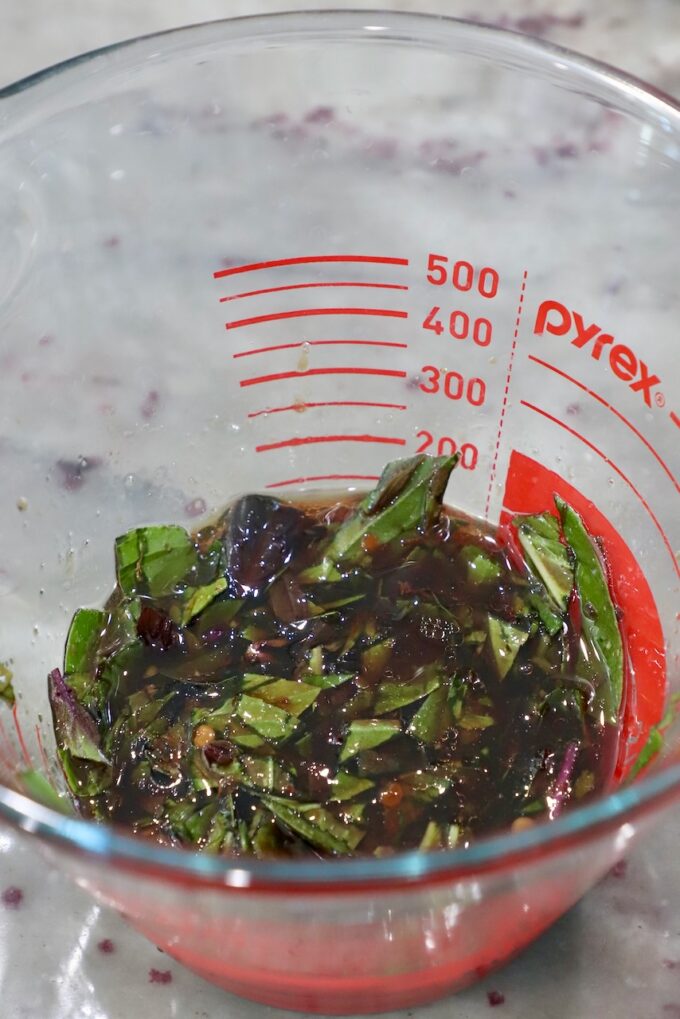
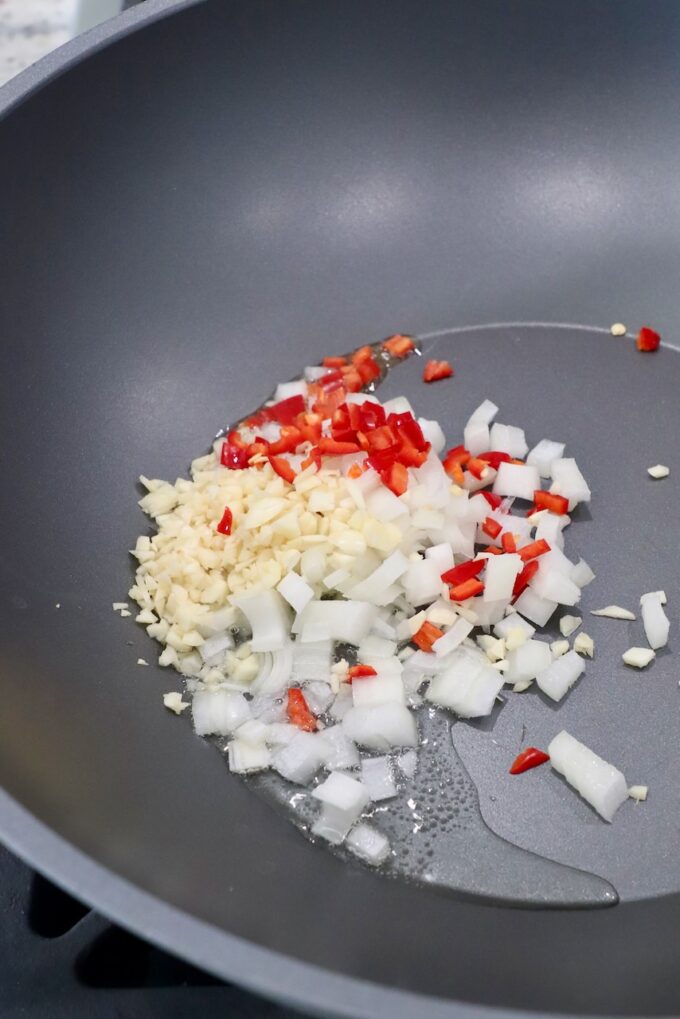

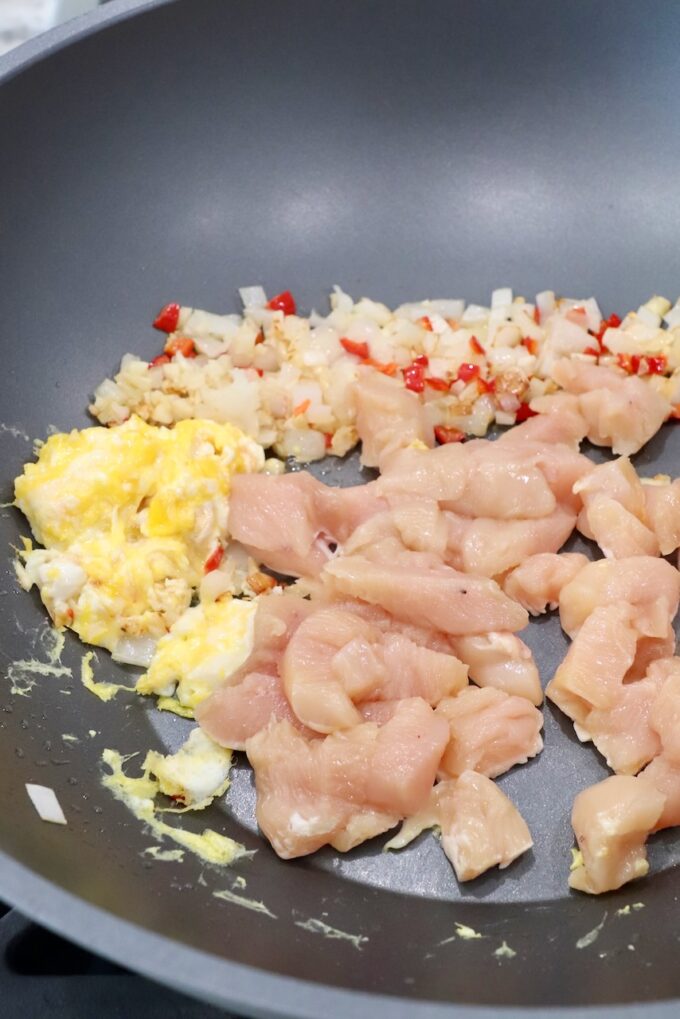
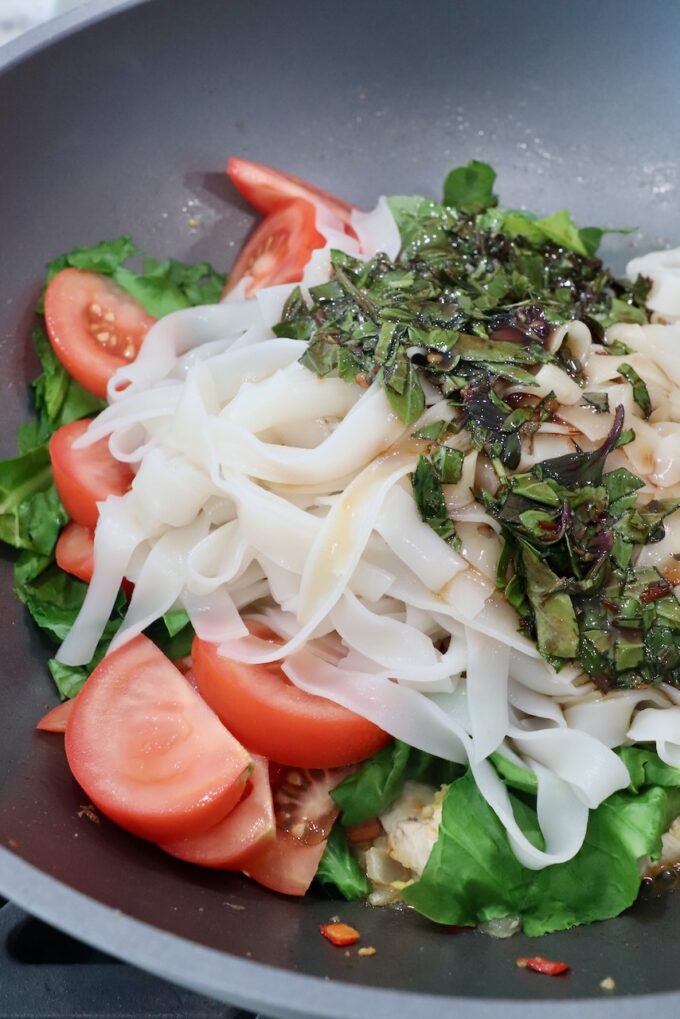
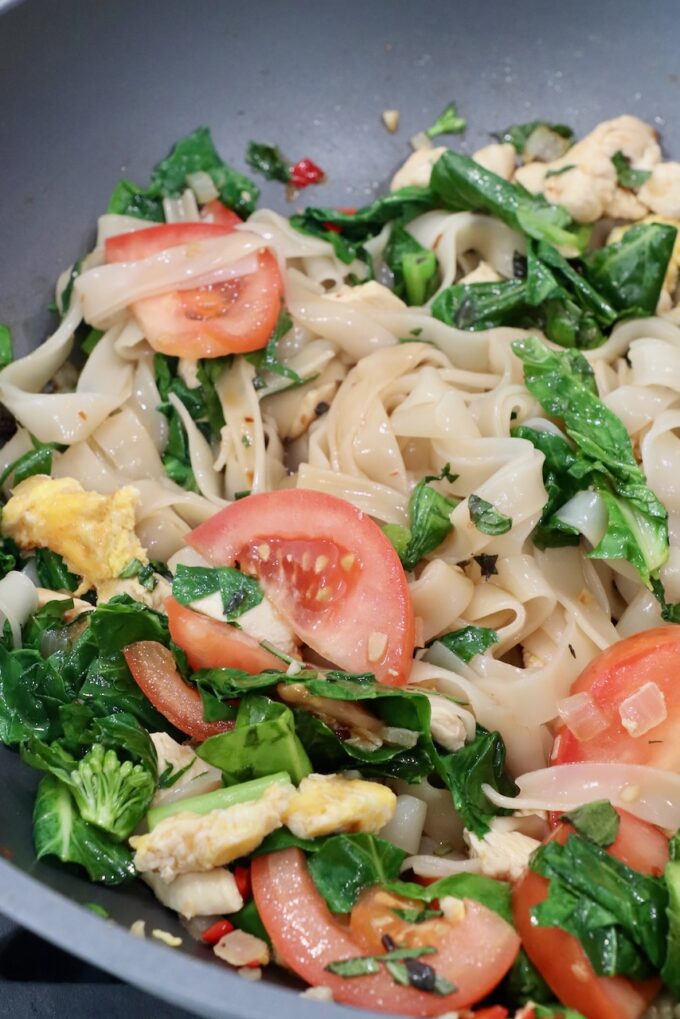
- Make the sauce. In a small bowl, combine oyster sauce, fish sauce, red chili paste, soy sauce, sesame oil, sugar and Thai basil. Set the sauce aside.
- Boil the noodles. Bring a large pot of water to boil on the stove. Add the rice noodles to the hot water and cook for 5 minutes. Drain and set aside.
- Cook the veggies. Add canola oil, or vegetable oil, to a large skillet or wok on the stove over medium high heat. Once the oil is hot, add minced garlic cloves, Thai chilies and diced onions. Sauté for 2 minutes.
- Scramble the egg. Add a whisked egg to the wok and scramble for 1 minute.
- Cook the chicken. Add small pieces of diced chicken breast to the wok and cook for 3-4 minutes.
- Stir fry the drunken noodles. Toss in chopped Chinese broccoli, tomato wedges and the cooked rice noodles. (If the cooked noodles are stuck together, rinse them in cold water before adding them to the wok.) Pour the previously prepared sauce into the skillet and toss everything together. Sauté for 2 minutes.
- Finish the dish. Remove the wok from the heat and stir in more fresh Thai basil leaves. Serve immediately.
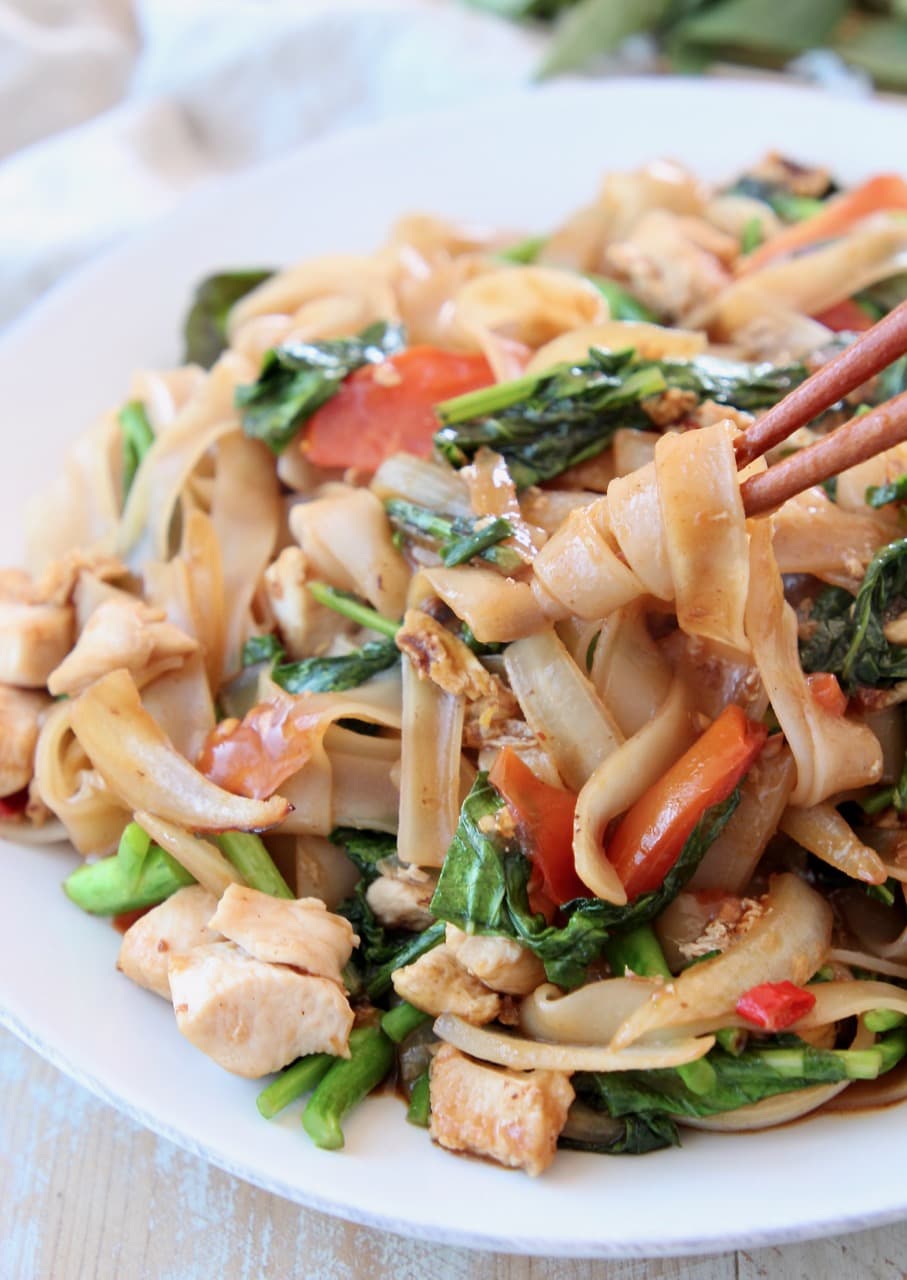
Frequently asked questions
- Are drunken noodles spicy? This dish is on the spicier side. I would say, made as is, the dish would be a spice level 5 on a 1-10 scale at a Thai restaurant. For more spice, add more Thai chilies and additional chili paste to the sauce. For less spice, reduce the Thai chilies and chili paste by half.
- Can you add other vegetables to the dish? Sure thing! Feel free to replace any of the vegetables, or the chicken in this dish, with other vegetables like thinly sliced red bell pepper, baby corn, diced zucchini or shredded carrots.
- What is the difference between Drunken Noodles, Pad Thai and Pad See Ew? The main difference is the sauce used in each of these Thai dishes. Pad See Ew looks similar to drunken noodles because of the wide rice noodles found in both dishes. But it’s sauce is mostly made up of a combination of dark and light soy sauce and it’s not spicy. Pad Thai is made with a thinner rice noodle and it’s sauce is sweeter and nuttier, with a little bit of spice.
Other protein options
Instead of chicken, you can easily substitute beef, shrimp, pork or tofu in this recipe.
- To make this recipe with shrimp, simply add peeled and deveined shrimp at the same time you would add the chicken. Continue to cook the recipe as directed.
- To make this recipe with beef, I highly recommend checking out my Kung Pao Beef recipe. In this recipe I share the secret that Chinese restaurants use to make the most tender beef. You can use the same method for beef in this recipe. Simply follow the recipe above to tenderize sliced flank steak, then add the steak at the same time you would add the chicken or shrimp.
- To make the recipe with pork, you can add 1/2 pound of small diced pork tenderloin or ground pork, at the same time you would the chicken. Continue to prepare the rest of the recipe as instructed.
- To make this recipe with tofu, press the liquid from a block of extra-firm tofu, then dice the tofu. Add the tofu, in place of the chicken, after scrambling the egg.
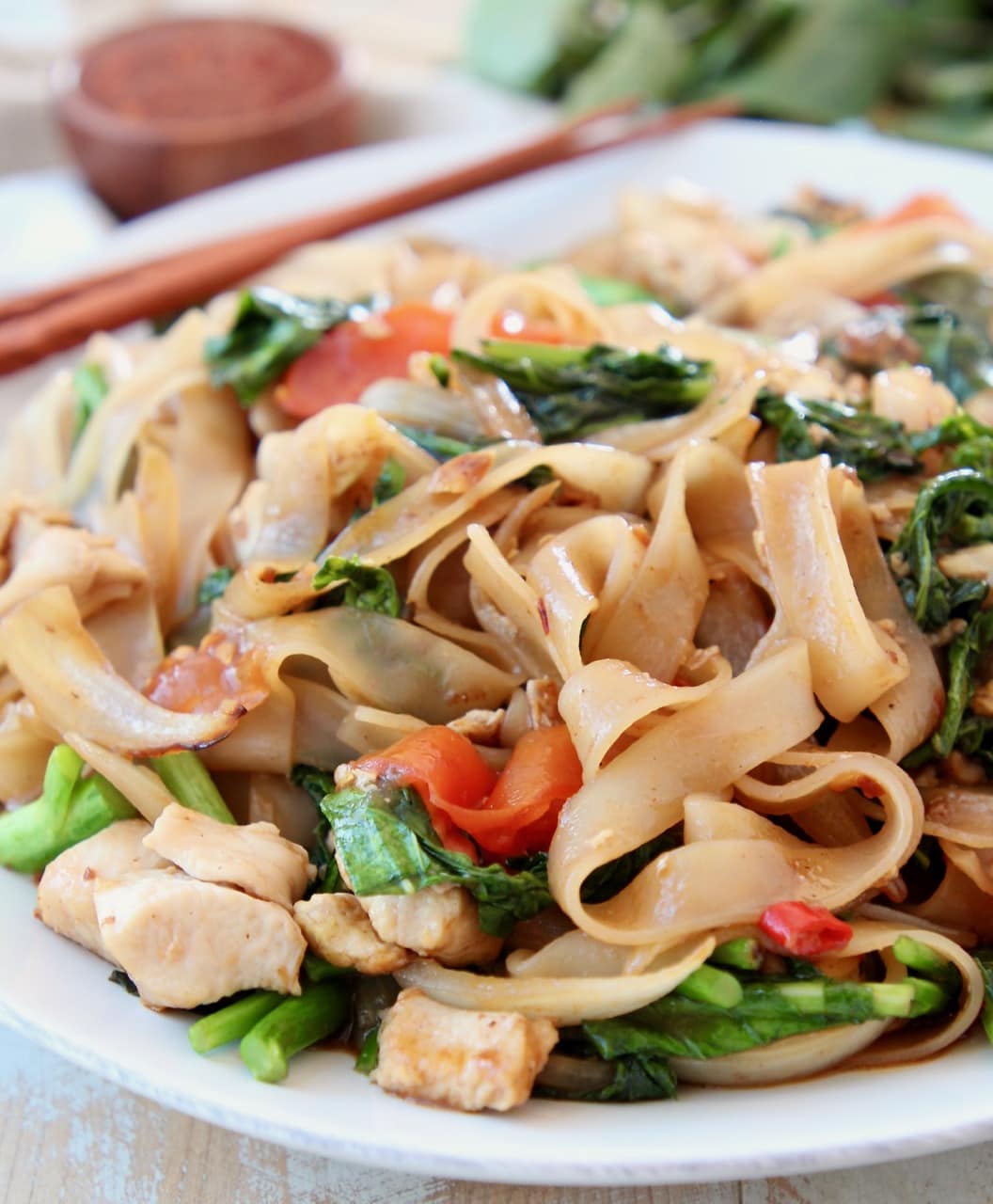
Substitutions for Asian ingredients
You can find most of the ingredients for this drunken noodles recipe in the Asian section at major grocery stores. For the harder to find ingredients, I always make a trip to the Asian market before preparing this dish. I pick up the Chinese broccoli, Thai chilies, Thai basil and wide rice noodles.
I’m fortunate enough to live just 3 miles from an Asian grocery store. I love to shop there for interesting finds, inexpensive produce and the best Boba Milk Tea ever!
If you’re not so lucky to live that close to an Asian market or don’t have the time to visit one before making this recipe, you can make some simple swaps to still create this delicious dish.
- Thai Chilies: Although some major grocery stores have began to carry Thai chilies, if you can’t find them, simply substitute 1 serrano chili pepper for the 2 Thai chilies.
- Thai Basil: Thai basil has more of an anise flavor and is slightly spicier than sweet basil. The leaves are smaller and more narrow and the stems are purple. Substitute regular sweet basil, if you can’t find Thai basil. Thai holy basil is another type of basil that’s even more spicy than Thai basil and more peppery. Use it in place of Thai basil, if that’s all you can find.
- Wide Rice Noodles: Rice noodles are available at most major grocery stores in the Asian section, but the width may vary. If wide rice noodles are not available, simply substitute the widest rice noodle they offer. This might be pad thai noodles, which is totally fine.
- Chinese Broccoli: Chinese broccoli is a leaf vegetable with thick stems. Unlike the broccoli you might be used to, it does not have florets. The flavor though is very similar to that of broccoli, just slightly more bitter. Broccolini is a hybrid of Chinese broccoli and broccoli. Simply substitute 1/2 pound of broccolini or traditional broccoli, if you can’t find Chinese broccoli.
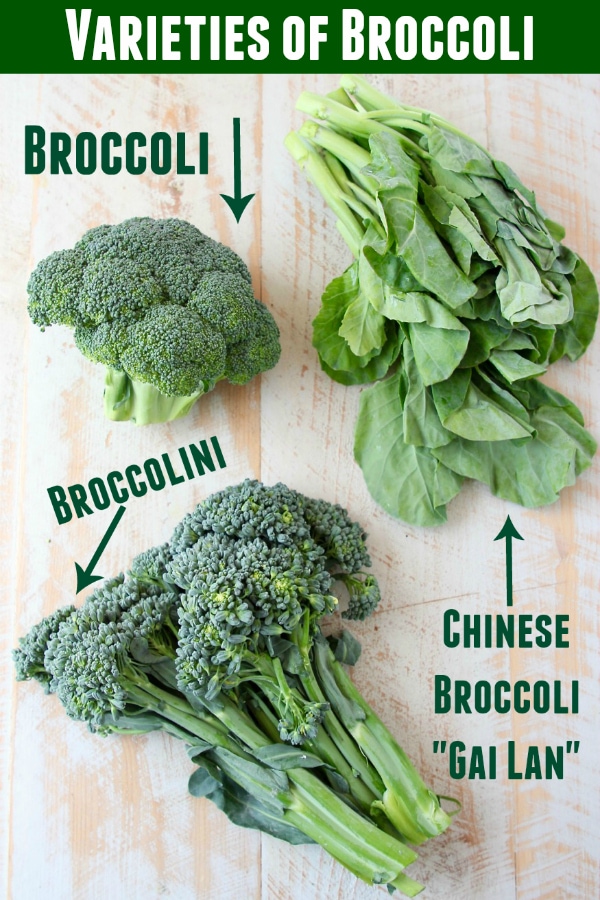
How to store and reheat
Store leftover drunken noodles in an airtight container for up to 5 days.
To reheat the leftovers, place them in a microwave-safe bowl, cover and reheat for 2 minutes.
Diet variations
- Make this recipe gluten free with a couple of simple swaps. Use gluten free oyster sauce, gluten free fish sauce and gluten free soy sauce, also known as tamari. Combining gluten free versions of each of these sauces, will make the entire dish gluten free.
- To make this recipe vegetarian, either omit the chicken, or replace it with small cubes of tofu or diced portobello mushrooms. Replace the fish sauce with an additional tablespoon of soy sauce. Replace the oyster sauce with a vegetarian mushroom oyster sauce.
More Thai recipes
Drunken Noodles
Video
Ingredients
- 2 tablespoons oyster sauce
- 1 tablespoon fish sauce
- 1 teaspoon ground fresh red chili paste
- 2 tablespoons soy sauce
- 1 tablespoon sesame oil
- 2 teaspoons sugar
- ½ cup thai basil, divided
- 8 ounces wide rice noodles
- 1 tablespoon canola oil
- 6 cloves garlic , minced
- 2 red thai chilies , minced
- ½ cup onion , sliced
- 1 egg, whisked
- ½ pound chicken, small dice
- ½ pound Chinese broccoli , chopped
- 1 tomato , sliced into wedges
Instructions
- Bring a large pot of water to boil.
- In a small bowl, combine the oyster sauce, fish sauce, red chili paste, soy sauce, sesame oil, sugar and ¼ cup chopped Thai basil. Set aside.
- Add the rice noodles to the boiling water. Cook for 5 minutes. Drain and set aside.
- Add the canola oil to a large skillet over medium high heat.
- Once the oil is hot, add the garlic, thai chilies and onion, saute for 2 minutes.
- Add the egg and scramble for 1 minute.
- Add the chicken and cook for 3-4 minutes.
- Add the cooked rice noodles, Chinese broccoli, tomato and the sauce.
- Toss to combine and saute for 2 minutes.
- Remove from the heat and stir in the remaining fresh Thai basil leaves.
Notes
- Most ingredients for this recipe can be found in the Asian section of major grocery stores. For some of the harder to find ingredients, use these substitutions.
- Substitute broccoli or broccolini for the Chinese broccoli
- Substitute sweet basil for the Thai Basil
- Substitute 1 minced serrano chili for the 2 Thai chilies
- Substitute Pad Thai noodles for the wide rice noodles
- This dish can easily be made gluten free depending on the sauces used. Luckily gluten free soy sauce, fish sauce and oyster sauce are easy to find online or at most major grocery stores.
Nutrition Facts
We are a participant in the Amazon Services LLC Associates Program, an affiliate advertising program designed to provide a means for sites to earn advertising fees by advertising and linking to amazon.com.


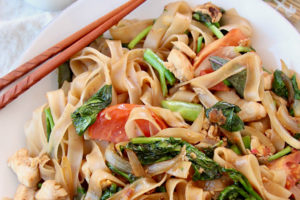
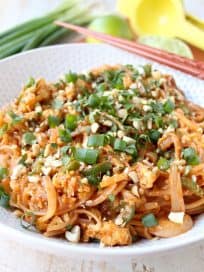
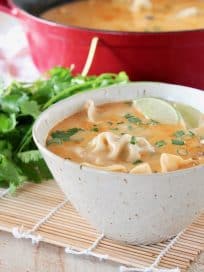

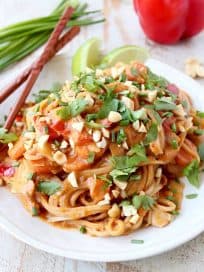
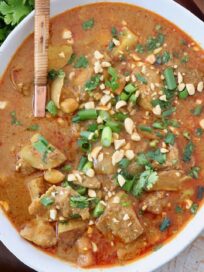
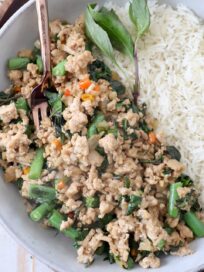
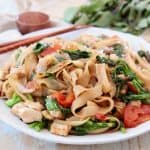

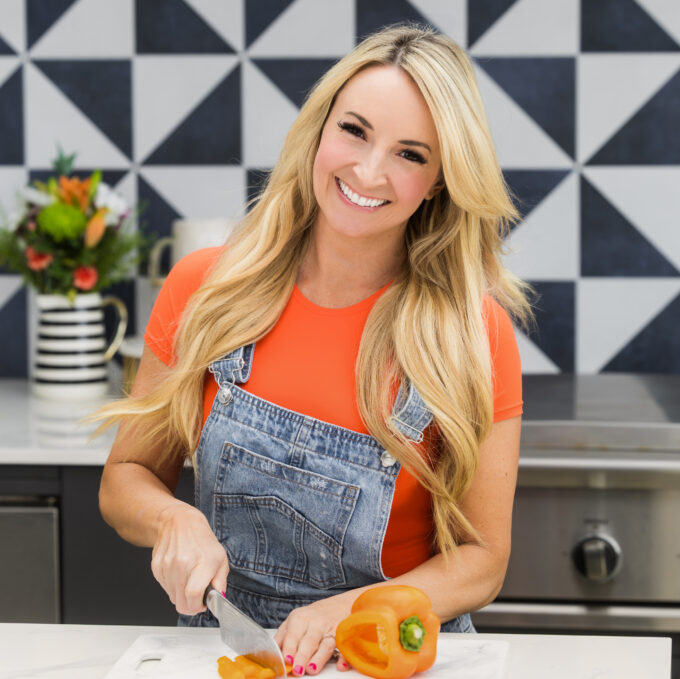

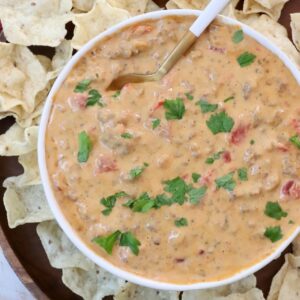
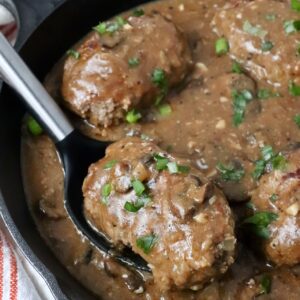
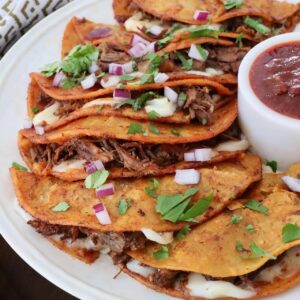


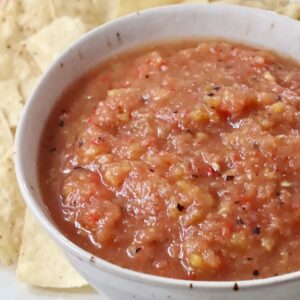
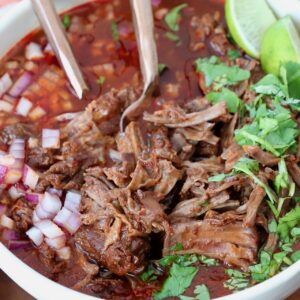

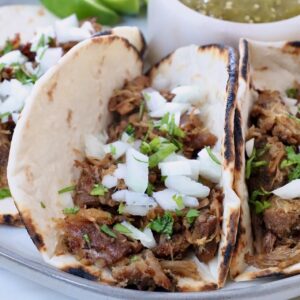


7 Comments on “Drunken Noodles”
All flavours were perfectly combined, such a great and tasty recipe, thanks for sharing!
Wow, such flavor and way better than any Thai restaurant. The perfect amount of spice and the sauce is divine.
Yay, I’m so glad you enjoyed it Eileen!!
This is a great takeout fakeout recipe! The flavor is off the charts good!
YES! Love Rama and cannot ever go without getting their Drunken Noodles (and Roti bread, and some type of curried duck). Can’t wait to try this recipe out! Thanks for sharing!
I’ll take two!
Omg, looks AMAZING! You know how I love drunken noodles (My favorite too!)… Awesome job! Love to see LLB going Asian style! 🙂